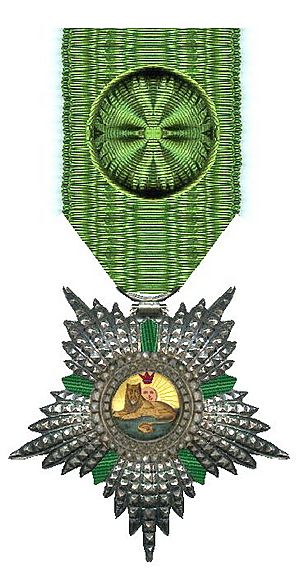Henry Lindsay Bethune facts for kids
Major-General Sir Henry Lindsay Bethune (born April 12, 1787 – died February 19, 1851) was a Scottish military officer. He was part of a British team that visited the Persian Empire (modern-day Iran) in 1810. His mission was to help modernize the Persian army.
Contents
Life of Henry Lindsay Bethune
Early Life and Military Career
Henry Lindsay was born in Fife, Scotland. His family had a long history, connected to important Scottish noble families. In 1813, after his father passed away, Henry added "Bethune" to his name. This was to honor his family's history and an estate they inherited.
Bethune started his military career as an artillery lieutenant in the Madras Horse Artillery in India. He was very tall, about 6 feet 8 inches! This impressive height made a big impression on the Persians. They even compared him to Rustam, a legendary hero from Persian stories. People also admired his fairness and his understanding of the world.
Helping Persia
One of Bethune's first big jobs was to help modernize Persia's horse artillery. This meant teaching them new ways to use cannons and train their soldiers. In 1816, he received a special Persian award called the Order of the Lion and the Sun. This award was given to foreigners who had done great things for Persia.
After several years, Bethune left his service in India and went back to Scotland. However, his work in Persia was highly respected. A British diplomat named Sir Justin Sheil wrote about how important Bethune was. He said that Bethune made the artillery in a region called Azerbaijan (part of Persia at the time) very strong and efficient. Even years later, his name was still honored, and his training methods were remembered.
Return to Persia and Later Years
In 1834, Henry Lindsay Bethune was called back to Persia. There were worries about who would become the next king after Fath Ali Shah died. Bethune led parts of the Persian Army and helped support the Shah's grandson, Mohammad Shah Qajar, to become the new ruler. He also helped put down a major rebellion.
After this, Henry Lindsay returned to Britain. In 1836, he was given the special title of "Baronet Bethune of Kilconquhar." But he was sent back to Persia again that same year. He became a major general in the Persian Army. He retired in 1839 after a disagreement with the Persian government. This disagreement was about Persia's attacks on Herat in Afghanistan, which was an area important to Great Britain.
Because of the Herat situation, Great Britain removed its military and diplomatic teams from Persia. They even took control of Kharg island and attacked Bushehr. In response, Mohammad Shah Qajar started talking to France again. He sent a team to France to ask for military help.
Family Life and Legacy
In 1822, Bethune married Coutts Trotter. They had three sons and five daughters.
- Anne Catherine Bethune (1823–1903)
- Stewart Lindsay Bethune (1825–1904)
- John Trotter Bethune (1827–1894), who later became the 10th Earl of Lindsay
- Caroline Felicie Bethune (1828–1891)
- Henry James Hamilton Bethune (1834–1862)
- Charlotte Jane Bethune (1835–1855)
- Coutts Bethune (1839–1909)
- Martin William Bethune (1843–1859)
Sir Henry died in Tabriz, Persia, in 1851. He was buried at the Armenian Church of Saints Thaddeus and Bartholomew in Tehran.
His eldest son, John Trotter Bethune, later successfully claimed an old family title. He was recognized as the 10th Earl of Lindsay in 1878. This meant his father, Sir Henry, was considered the 9th Earl of Lindsay.
See also
- Iran-United Kingdom relations
- France-Iran relations



